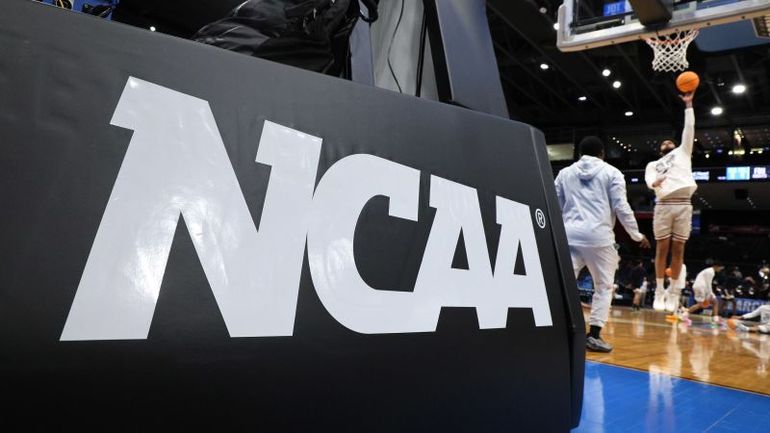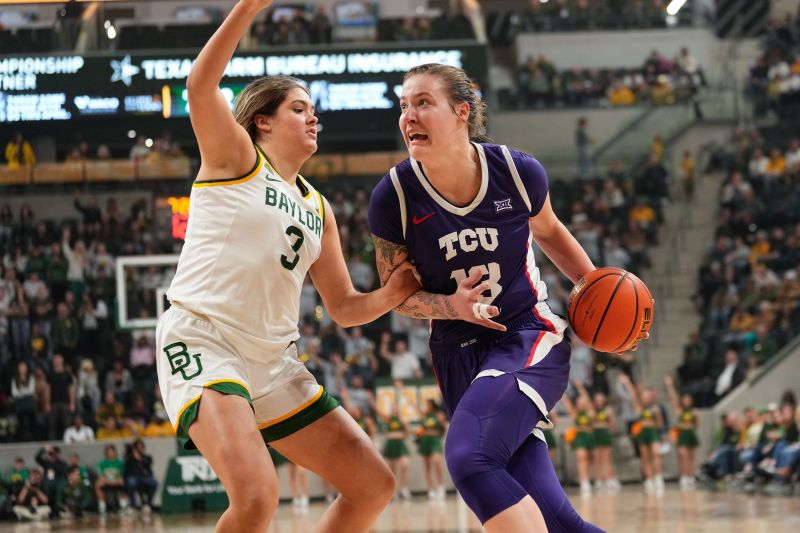
The Future of College Sports: Potential Transformations Ahead

Get ready for significant shifts in college sports as athletes may soon experience major changes in their compensation.
College athletes may see significant changes in their pay in the near future. There is a lawsuit called House v. the National Collegiate Athletics Association (NCAA) that is pushing for reforms in how collegiate players are compensated. This class action lawsuit aims to modify the way athletes receive payment for endorsements known as name, image, and likeness (NIL) deals, as well as a portion of broadcast revenue.
The NCAA may have to pay up to $20 billion if it loses the case. A settlement could amount to $2.7 billion in back-pay damages and a change in how student athletes are compensated.
According to reports, the NCAA and the conferences will meet soon to discuss the terms of a settlement.
The House v. NCAA lawsuit was initiated by Grant House and Sedona Prince, college athletes, against the NCAA and the Power 5 conferences – the Pac-12, Big Ten, Big 12, Southeastern, and Atlantic Coast – in the US District Court Northern District of California Oakland Division in 2020.
College sports is a massive industry, where significant amounts of money are constantly being exchanged.
The lawsuit honed in on the NCAA's decision to extend the broadcast coverage of the March Madness basketball tournament for eight years, worth a staggering $8.8 billion. It also aimed to recover damages for payments that were allegedly withheld incorrectly.
Football and basketball at Division I schools, which are seen as the top tier of college sports, brought in $7.9 billion in revenue last school year, based on information gathered by the Department of Education.
In total, Division I athletics generated around $17.5 billion in revenue in 2022, as reported by the NCAA, the organization that oversees college sports.
NIL deals are a result of an NCAA policy change in 2021 that permitted student-athletes to benefit from sponsorship opportunities. This change was influenced by California's decision in 2019 to allow athletes to earn endorsement money, which sparked a national trend. Additionally, a significant U.S. Supreme Court ruling in 2021 stated that student-athletes could receive education-related payments, ultimately transforming the college sports landscape.
College athletes involved in the House lawsuit argue that the existing NIL rules and the "anticompetitive" college system negatively impact their ability to earn money.
The lawsuit also claims that the current system hinders schools from freely competing for top college recruits, with potential severe consequences for schools that violate these rules.
As college athletes, Iowa basketball star Caitlin Clark and USC football player Caleb Williams have been featured in commercials for big national brands like State Farm and Wendy's. However, a class-action lawsuit argues that the current restrictions are causing obvious harm on a larger scale.
The lawsuit points out that many college athletes have generated substantial value in their Name, Image, and Likeness (NIL), and if the restraints were lifted, they could earn compensation for their use in a competitive market.
Grant House competes in the men's 200m butterfly C final at the TYR Pro Swim Series Westmont at FMC Natatorium on March 8, 2024.
Grant House competes in the men's 200m butterfly C final at the TYR Pro Swim Series Westmont at FMC Natatorium on March 8, 2024.
Michael Reaves/Getty Images
The suit claims the NCAA restricts how much student athletes can earn outside employment.
The suit mentions a NCAA bylaw that regulates the types of jobs athletes can have at their universities. This bylaw specifically states that athletes cannot receive any form of payment for their reputation or fame gained through their athletic abilities.
Furthermore, the lawsuit argues that the restriction is particularly unfair because only a small percentage of college athletes will go on to play professionally. This means that for most student-athletes, their name, image, and likeness (NIL) are most valuable during their college years.
In 2021, the Supreme Court made a decision that allowed student-athletes to receive more compensation by ruling that NCAA rules against it were against antitrust laws.
Two years later, commissioners of major college conferences expressed concerns that the Supreme Court ruling had led to a confusing mix of state laws that are harming collegiate sports and could even cause sports programs to shut down nationwide.
The transfer process in college has become easier for athletes, allowing them to switch teams more frequently without losing a year of eligibility.
Commissioners have expressed concerns about the growing trend of athletes utilizing the transfer portal, as it can pose challenges for student-athletes trying to balance sports and academics to earn their degree.
College boosters have been using the current inconsistent laws to lure top athletes with promises of big paydays, putting colleges in other states at a disadvantage.
CNN has contacted the NCAA and the five conferences named as defendants for their response.
When approached by CNN for comment, the National Association of Collegiate Directors of Athletics declined to comment.
Sedona Prince (right) drives to the basket during the TCU Horned Frogs' game against the Baylor Lady Bears.
Sedona Prince (right) drives to the basket during the TCU Horned Frogs' game against the Baylor Lady Bears.
Chris Jones/USA Today Sports via Reuters
The potential settlement
A document shared with power conference presidents and administrators, as reported by Yahoo Sports, reveals that if the case is lost at trial, the defendants may have to pay $20 billion and the NCAA might have to declare bankruptcy. It was not disclosed who authored the document.
If the plaintiffs win the trial, athletes in the NIL system would have more freedom, they claim. "So essentially, if we win, there would be a complete free market in NIL, including from broadcast payments," explained Jeffrey Kessler, one of the attorneys representing the plaintiffs, in an interview with The Athletic.
When CNN reached out to Kessler for a comment, he declined, stating that "Negotiations are ongoing."
According to reports, a settlement is expected to be around $2.7 billion in NIL back-pay damages. Additionally, there will be a system in place where approximately $20 million per year can be given directly from a power-conference school to its athletes.
As per ESPN, the NCAA is responsible for paying the damages, while the conferences will be in charge of implementing the revenue-sharing structure going forward.
According to ESPN, the ACC and Big 12 both agreed to the settlement on Tuesday. The NCAA and the Big Ten also reportedly approved the settlement on Wednesday.
This potential settlement reflects a shift in attitudes towards college athletes receiving payments.
Earlier this year, the Dartmouth College men's basketball team made history by becoming the first college athletes to vote to join a union. This is a big step forward in the evolving landscape of collegiate sports.
Editor's P/S:
The House v. NCAA lawsuit, and its potential settlement, is a significant development in the history of college sports. For decades, college athletes have been limited in their ability to earn money from their name, image, and likeness, while the NCAA and its member schools have profited handsomely from their labor. The lawsuit seeks to rectify this imbalance by allowing athletes to receive a fair share of the revenue they generate.
If the settlement is approved, it would represent a major victory for college athletes. They would finally be able to earn a living from their athletic abilities, and they would have more freedom to choose where they play and how they are compensated. The settlement would also create a more level playing field for colleges and universities, as they would all be subject to the same rules and regulations regarding athlete compensation. Overall, the settlement would be a major step forward in the fight for fairness and equity in college sports.








